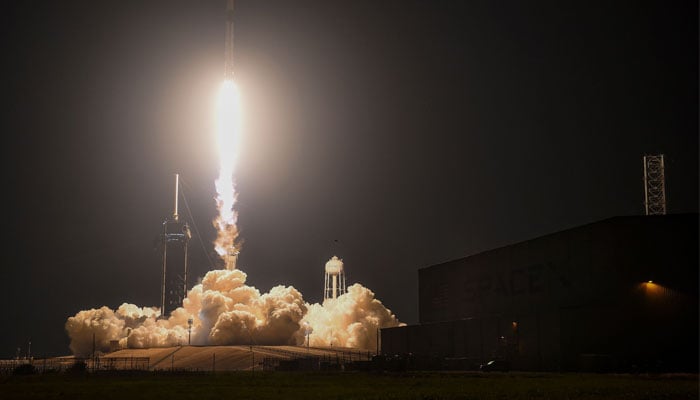SpaceX Falcon Heavy puts first ViaSat-3 broadband satellite in orbit
SpaceX launches underline ongoing space race to deploy internet satellites to give wide access to customers across globe
May 01, 2023

After several delays due to severe weather conditions, SpaceX has been able to successfully launch the ViaSat-3 broadband satellite on Sunday on a Falcon Heavy rocket.
The Falcon Heavy lifted off at 8:26 pm Eastern from NASA's Kennedy Space Center, Florida, toward geostationary orbit (GEO). It was the rocket’s sixth flight since 2018.
After moving upwards with a powerful force of 27 Merlin engines, the rocket turned over on an easterly path, which was also seen by tourists and the native people.
The space company usually collects the first-stage boosters to reuse however, this time all of the available propellant was required on Sunday to lift up the 13,000-pound ViaSat-3 satellite into its target orbit.
Eventually, the three stages were detached and fell into the ocean more than 50 miles below after lifting the rocket out of the lower atmosphere of the Earth.
On Thursday, SpaceX launched 46 of its own low-altitude satellites from Vandenberg Space Force Base in California. After that, it launched two medium-altitude broadband satellites for Luxembourg-based SES from the Cape Canaveral Space Force Station Friday.
The launches underline the ongoing space race to deploy space internet satellites to give wide access to customers all across the globe.
SpaceX's Starlink satellites are a series of low altitudes to provide high-speed, low-latency internet to users across the world.
A large number of Starlink satellites is required for providing users with uninterrupted service.
The user inputs are received by the satellites and then sent to nearby Starlinks for relay to "gateway" ground stations connected to high-speed data lines.
Responses are then passed along back to the user.
There is a different approach for ViaSat, which is stationing in 22,300 mile-high-orbits above the equator where they rotate in lockstep. Below the satellite the planet appears to be stationary.
The satellites have powerful solar panels capable of generating 25 kilowatts of power.
If everything goes as per the plan, the satellite will be providing internet service to its customers this summer.
The two other satellites for similar purposes but focused on Europe, Asia, Africa, and the Pacific are likely to be sent into space after the next two years.
David Ryan, president of space and commercial networks at ViaSat, told CBS News: "If you are a low-Earth orbit [provider], by definition, in order to stay up in orbit, you're going to be screaming across the sky fairly fast. So your terminal on the ground has to be more complicated ... and more expensive."
Ryan went on to say that "the other advantage of geosynchronous orbit is that you can see a third of the Earth with one satellite. So with one launch, one satellite, you potentially can connect to a third of the Earth. And that's the principle behind ViaSat-3."











